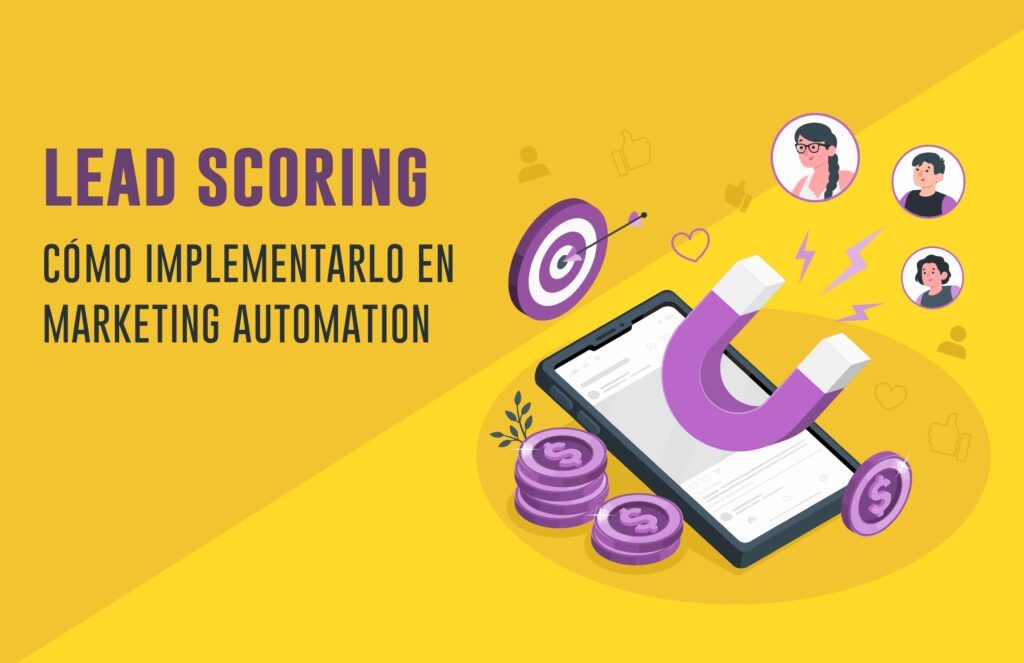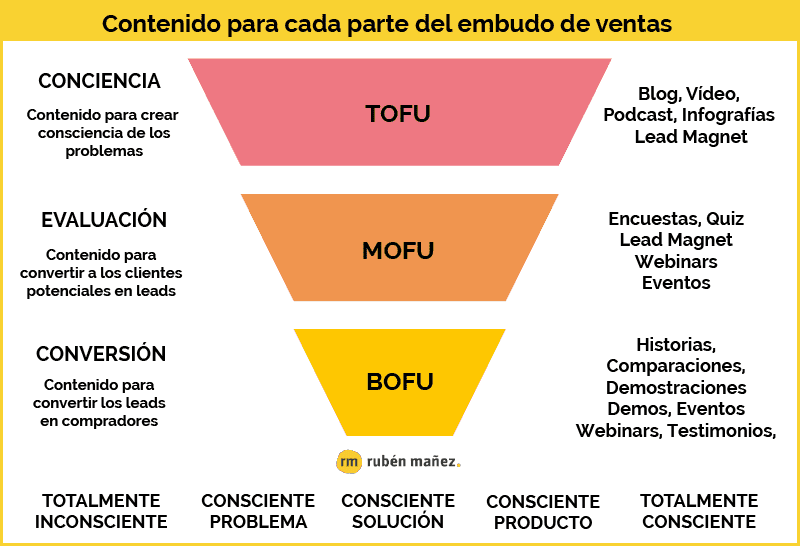Lead Scoring in Marketing Automation: How to Implement It
the 06 of June of 2024
the 06/06/2024
Lead Scoring in marketing automation is an essential technique to facilitate the conversion of prospects into customers. Through this methodology, companies can assign a value to leads based on their interest in products and their potential for conversion. This enables the focus of efforts and resources on those with a higher probability of becoming actual customers. But how can this technique be implemented? In this article, we will teach you how to achieve this with MDirector and its key advantages.
TABLE OF CONTENTS
Advantages of Lead Scoring in Marketing Automation
To ensure your list of leads is effective in the conversion process, it must contain the appropriate information and classification. This is precisely where an efficient database and Lead Scoring in marketing automation play a crucial role. Additionally, it helps to understand and guide each customer according to their stage in the buying process. This email marketing strategy offers the following benefits:
- Database segmentation: It allows you to divide your contact list into specific segments for better management.
- Message personalization: Facilitates both the creation and dissemination of personalized messages, allowing you to nurture and accompany each lead in their purchasing journey.
- Improved return on investment (ROI): Helps optimize the ROI of marketing and advertising actions.
- More focused work: Enables the marketing team to carry out more targeted and strategic tasks, while the sales team receives increasingly better and more prepared leads ready to close the sale.
- Specific actions: Provides the opportunity to plan and execute very specific actions aimed at particular user groups, thus increasing the effectiveness of your campaigns.
How to Implement a Lead Scoring System in Marketing Automation: Techniques
After understanding the advantages of implementing a solid strategy, let’s discover how to implement it. To effectively use Lead Scoring in marketing automation, it is essential to segment potential customers into three different phases that represent three types of MQLs (Marketing Qualified Leads), which we will discuss below along with other useful techniques to optimize email marketing campaigns:
1.Identification of MQL1 in the TOFU Phase
The first step is to identify those contacts classified as MQL1, meaning those who closely align with your buyer persona. To determine if a lead matches your buyer persona, it’s crucial to gather data such as geographic location, age, gender, interests, work sector, and other preferences. This information can be collected through customized forms, helping to create a dynamic list to segment the database according to their responses.
These contacts are in the TOFU (Top of the Funnel) phase of the sales funnel, where potential customers have a problem and are looking for a solution that fits their needs.
2. Identification of MQL2 in the MOFU Phase
To advance the Lead Scoring strategy in marketing automation, it’s essential to identify those contacts classified as MQL2. These refer to those who are already familiar with your company and have some level of commitment to it. Thus, they are in the MOFU (Middle of the Funnel) phase of the sales funnel, where prospects are considering different purchasing options in the market.
At this stage, it’s important to note that potential customers are evaluating various alternatives. Therefore, it’s crucial to execute an effective inbound marketing strategy to persuade them effectively. To help classify MQL2s, you can use data such as clicks on specific links, website visits, email open rates, downloads, etc.
3. Identification of MQL3 in the BOFU Phase
This final stage of the sales funnel is decisive in identifying the “hottest” contacts, as they are closest to completing the purchase process, meaning they are in the BOFU (Bottom of the Funnel) phase. Therefore, having a strong Lead Scoring strategy in marketing automation is crucial to identify these prospects and convince them that your business offers the best solution to their problems.
4. Define Clear Business Objectives
One of the key steps in implementing a Lead Scoring strategy in marketing automation is to define the business objectives you want to achieve. Some of these may include increasing conversion rates, improving ROI, enhancing sales team efficiency, etc.
5. Set Up Your Lead Scoring System
Configuring a Lead Scoring system in your platform is essential for automating the lead qualification process. This action will allow you to assign points to your prospects automatically based on predefined aspects. This scoring system will help you identify and prioritize those users who are most ready to advance in the sales funnel.
At MDirector, we have a rating reputation system that provides the opportunity to segment your contact list. Through this system, users are assigned a score based on the activities they perform on the communications received. This score ranges from 5 to 0, where 5 refers to a recipient who opens all or most emails, while 0 corresponds to those who haven’t opened any emails in 60 days or more. For example, you can create personalized emails to capture the attention of less active users to try to re-engage them.
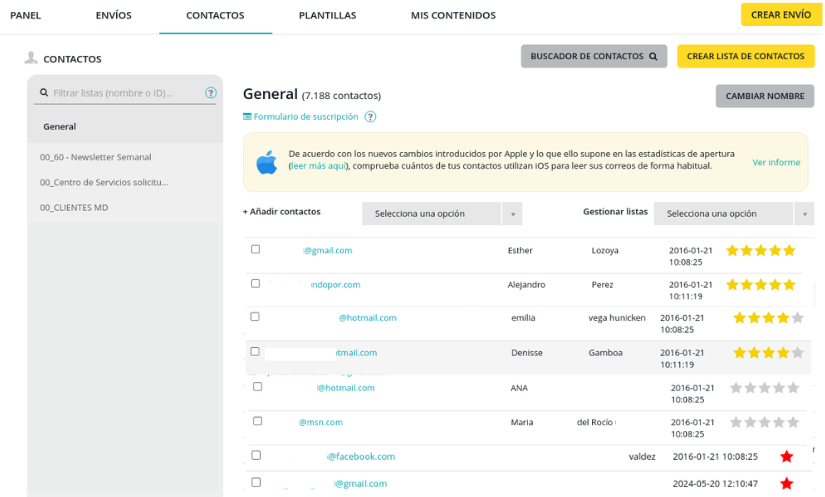
Sistema rating reputation de MDirector
6. Develop Your Lead Nurturing Strategy
After classifying your contacts according to the phase they are in within the sales funnel, it’s time to design and apply your lead nurturing strategy. This technique allows you to gradually convert cold leads into potential customers. Then, you can classify them when they are ready to make a purchase. The main goal of this strategy is to foster personalized interaction between your leads and your brand. This continuous process will guide them to the decision-making stage, where they must decide whether to purchase your product or service.
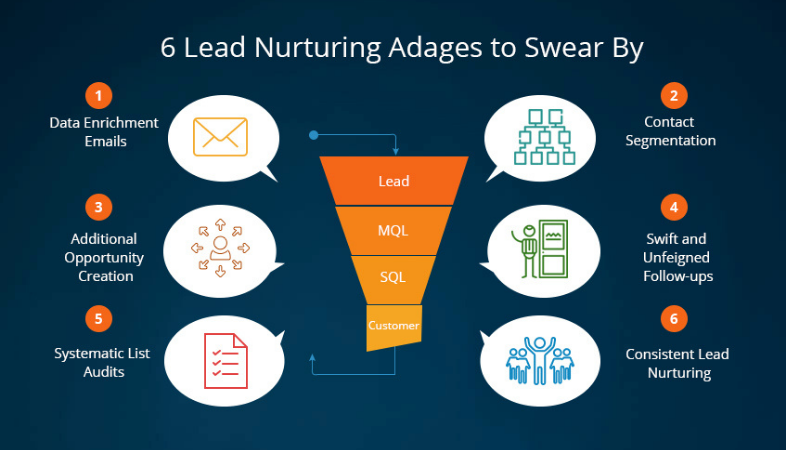
Estrategia de Lead Nurturing
7. Evaluate the Results
Lead Scoring in marketing automation simplifies numerous processes and optimizes your time, allowing you to implement your lead nurturing strategy more efficiently. However, to achieve the expected results, it’s necessary to conduct periodic reviews of the results obtained.
This evaluation will allow you to analyze data such as the quantity and quality of leads classified at each stage of the sales funnel, and it is most recommended to carry out this review monthly to monitor performance. Some of the results that should be evaluated include conversion rates at the following stages:
- From MQL1 to MQL2
- From MQL2 to MQL3
- From MQL3 to MQL4
- From MQL to SQL
- From MQL to Customer
8. Optimize Lead Scoring Criteria
After evaluating the results, it’s time to optimize the lead scoring criteria. The goal is to increase both the quantity and quality of potential customers, adapting to their changing needs and circumstances.
For example, if you have a large number of leads but the quality is low, you should consider adjusting the criteria to be more precise and aligned with your target audience. Conversely, if you have high-quality leads but the quantity is insufficient, you might try reducing non-essential criteria to attract more prospects.
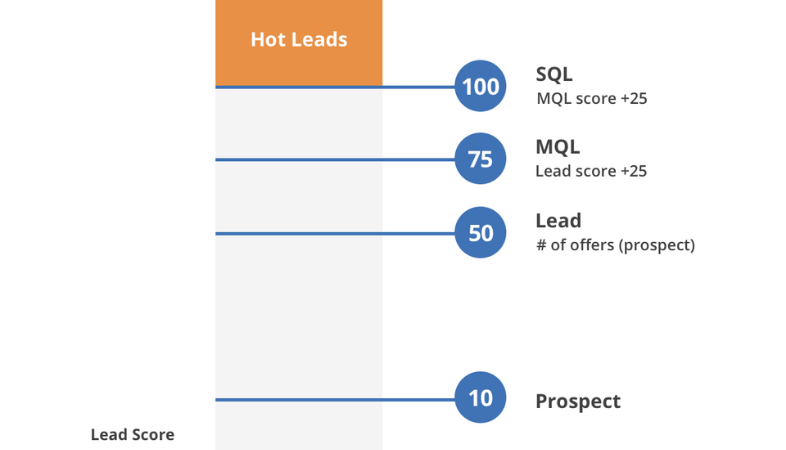
Lead Scoring en marketing automation
10. Integrate Your Lead Scoring System with CRM
To ensure lead data is updated in real-time and always available, integrate your lead scoring system with CRM. This integration will help you better manage leads and provide a faster response from the sales team.
Apply Lead Scoring in Marketing Automation
As you have seen, it’s crucial to have a solid Lead Scoring strategy in marketing automation. This tool will allow you to offer your potential customers a unique and valuable experience. Therefore, it’s essential to make the most of your database by classifying your contacts as efficiently as possible.
In other words, it’s about getting to know your customers better by identifying the stage they are in within the buying funnel. This way, you can offer them your products or services more precisely, as you’ll have a better understanding of their needs and preferences.
Additionally, you should consider the significant advantage of implementing your strategy through automated tools. This not only streamlines and simplifies the process but also saves you a lot of time, which you can focus on other activities in your business that require more attention.
Remember the importance of each step, from identifying leads according to the phase they are in, to evaluating the results. Each stage complements the previous one, so you shouldn’t skip any if you want your strategy to be successful.
To facilitate this entire process, at MDirector, we offer our Marketing Automation Platform, which integrates with our Email Marketing, SMS Marketing, and Landing Page tools. This way, you can obtain accurate lead data and efficiently send your campaigns to all subscribers on your list.

